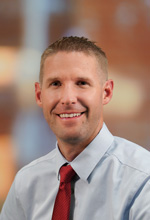ARCHIVED: NOT AVAILABLE FOR CREDIT
FNA/Core Biopsy of Spindle Cell Neoplasms: Snakes or Worms?
The spindle cell lesion represents a large and diagnostically diverse group among soft tissue tumors. In this presentation we will examine the role of cytology, core needle biopsy, and ancillary techniques that allow for a specific classification when possible. We will discuss general principles of soft tissue pathology and practice using eight interesting spindle cell core biopsy case examples.
Originally presented on February 11, 2020, in Park City, Utah.
Lecture Presenter
 | Michael B. Ward, MD Assistant Professor of Pathology (Clinical) |
Dr. Ward is an assistant professor of anatomic pathology at the University of Utah School of Medicine. He received his undergraduate education at Brigham Young University and his medical education from the University of Texas School of Medicine. He completed his residency in Anatomic and Clinical Pathology as well as fellowships in surgical pathology and cytopathology at the University of Utah and ARUP Laboratories. Dr. Ward’s professional interests include cytology, bone and soft tissue pathology, and resident and undergraduate medical education. His research interests include translocation associated soft tissue sarcomas, and PD-L1 expression in upper-tract urothelial carcinomas.
Objectives
After this presentation, participants will be able to:
- Describe the diversity of spindle cell lesions among all soft tissue tumors (the big picture)
- Recognize the role of the FNA/small biopsy in spindle cell lesions and the importance of ancillary techniques
- Examine the cytologic features of high vs low grade spindle cell lesions and the importance of grading
- Discuss the approach to working up spindle cell tumors using practice cases
- Identify helpful general principles in soft tissue pathology
Sponsored by:
University of Utah School of Medicine, Department of Pathology, and ARUP Laboratories
 Site Search
Site Search

